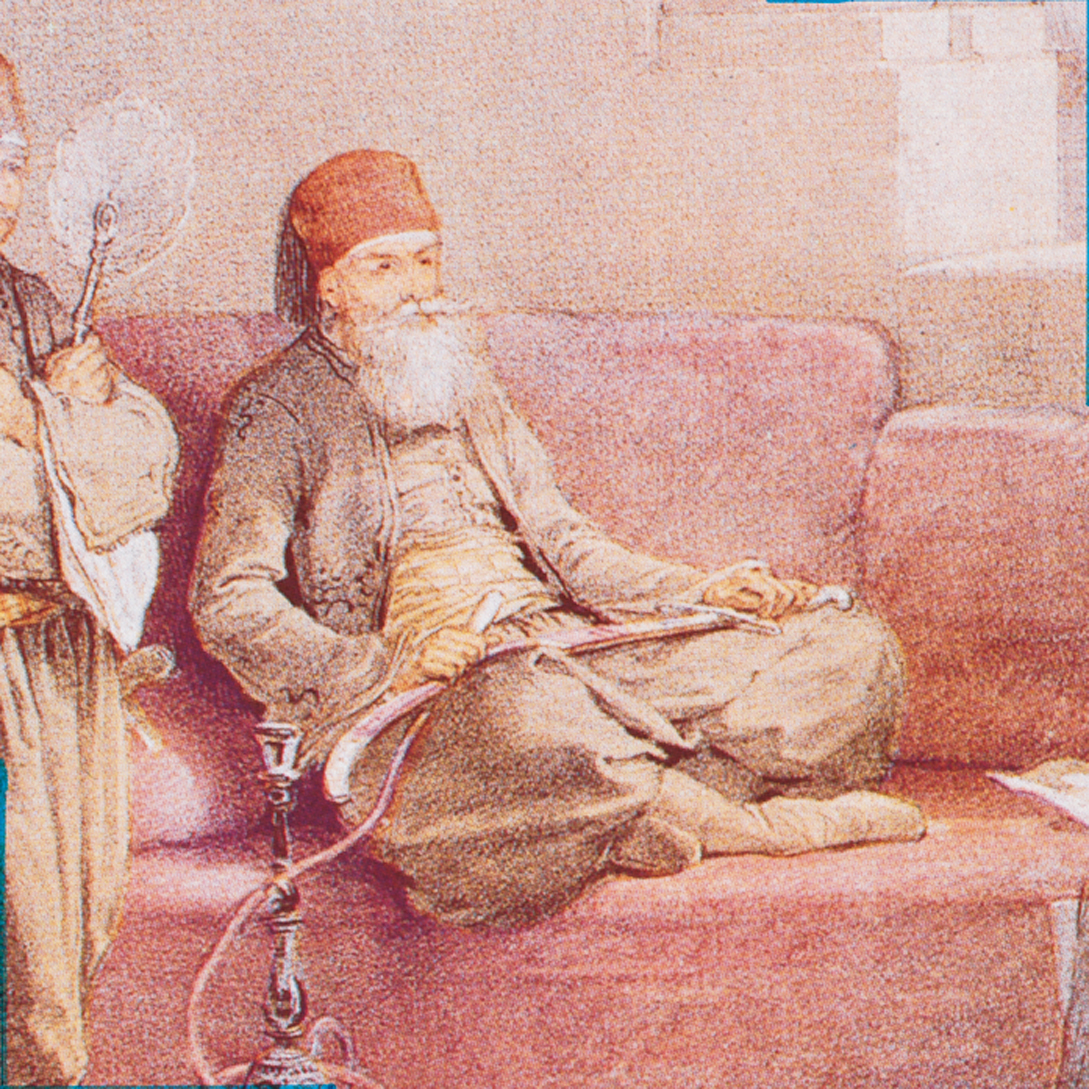A History of World Societies:
Printed Page 774
A History of World Societies Value
Edition: Printed Page 784
Individuals in Society
Muhammad Ali
Individuals in Society
Muhammad Ali

THE DYNAMIC LEADER MUHAMMAD ALI stands across the history of modern Egypt like a colossus. Yet the essence of the man remains a mystery, and historians vary greatly in their interpretations of him. Sent by the Ottomans, with Albanian troops, to oppose the French occupation of Egypt in 1799, Muhammad Ali maneuvered skillfully after the French withdrawal in 1802. In 1805 he was named pasha, or Ottoman governor, of Egypt. Only the Mamluks remained as rivals. Originally an elite corps of Turkish slave soldiers, the Mamluks had become a semifeudal military ruling class living off the Egyptian peasantry. In 1811 Muhammad Ali offered to make peace, and he invited the Mamluk chiefs and their retainers to a banquet in Cairo’s Citadel. As the unsuspecting guests processed through a narrow passage, his troops opened fire, slaughtering all the Mamluk leaders.
After eliminating his foes, Muhammad Ali embarked on a program of radical reforms. He reorganized agriculture and commerce, reclaiming most of the cultivated land for the state domain, which he controlled. He also established state agencies to monopolize, for his own profit, the sale of agricultural goods. Commercial agriculture geared to exports to Europe developed rapidly, especially after the successful introduction of high-
Muhammad Ali used his growing revenues to recast his army along European lines. He recruited French officers to train the soldiers. As the military grew, so did the need for hospitals, schools of medicine and languages, and secular education. Young Turks and some Egyptians were sent to Europe for advanced study. The ruler boldly financed factories to produce uniforms and weapons, and he prohibited the importation of European goods so as to protect Egypt’s infant industries. In the 1830s state factories were making one-
In the attempt to understand Muhammad Ali and his significance, many historians have concluded that he was a national hero, the “founder of modern Egypt.” His ambitious state-
A growing minority of historians question these views. They see Muhammad Ali primarily as an Ottoman adventurer. In their view, he did not aim for national independence for Egypt, but rather “intended to carve out a small empire for himself and for his children after him.”* Paradoxically, his success, which depended on heavy taxes and brutal army service, led to Egyptian nationalism among the Arabic-
QUESTIONS FOR ANALYSIS
- Which of Muhammad Ali’s actions support the interpretation that he was the founder of modern Egypt? Which actions support the opposing view?
- After you have studied Chapter 26, compare Muhammad Ali and the Meiji reformers in Japan. What accounts for the similarities and differences?
Document Project
How did reformers address the challenges facing the Ottoman Empire in the nineteenth century? Read excerpts from Ottoman reformers, and then complete a quiz and writing assignment based on the evidence and details from this chapter.